Key in a search term below to search our website.
Key in a search term below to search our website.
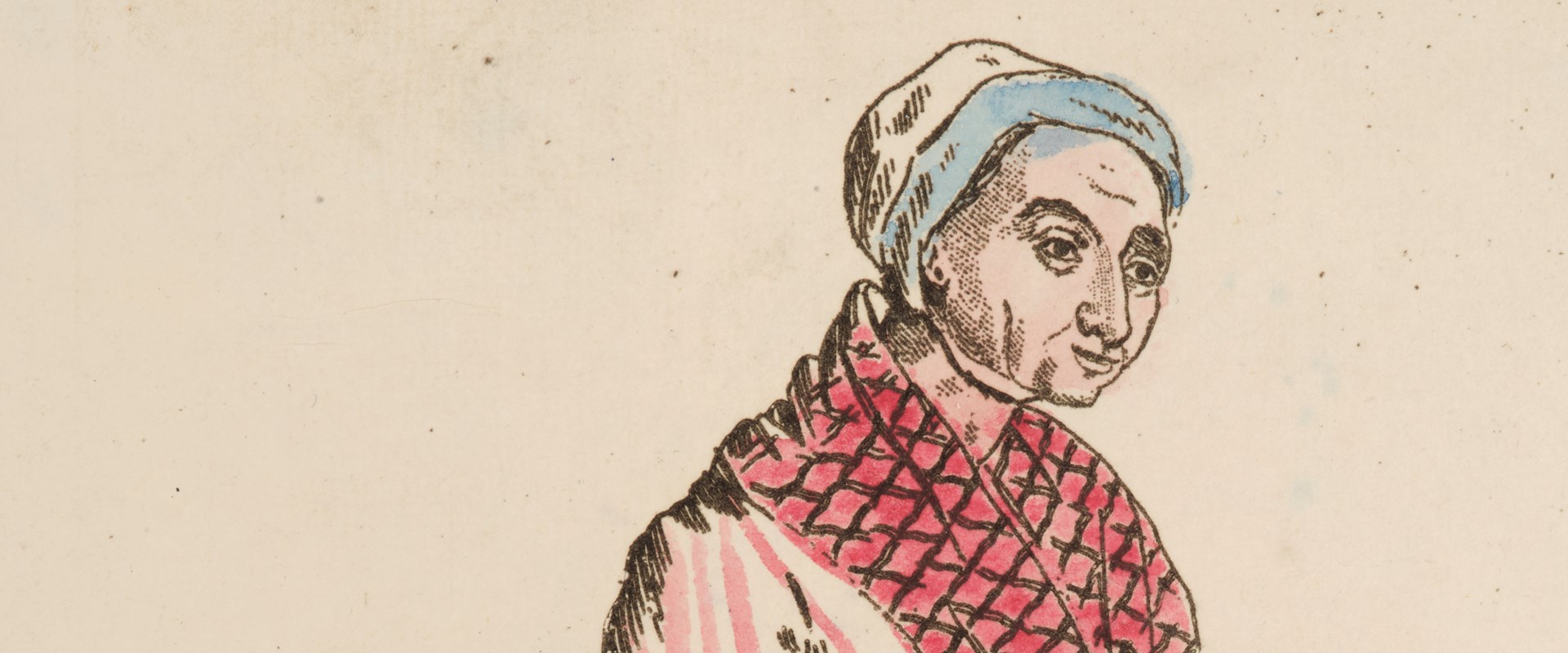
Mary Docherty, also know as Mrs Campbell
© Royal College of Physicians, Edinburgh
The Grays reported what they had seen to the police, which began the investigations into what became known as the West Port Murders. The body they had seen was recovered from the anatomy rooms of Dr Robert Knox, who had bought it and several others from William Burke and his accomplice William Hare for anatomical dissection.
William Burke said that the dead woman’s name was Mary Docherty. She is primarily remembered as the dead woman under the straw, but a bit more about who she was in life was recorded when William Burke and Helen McDougal were tried for her murder.
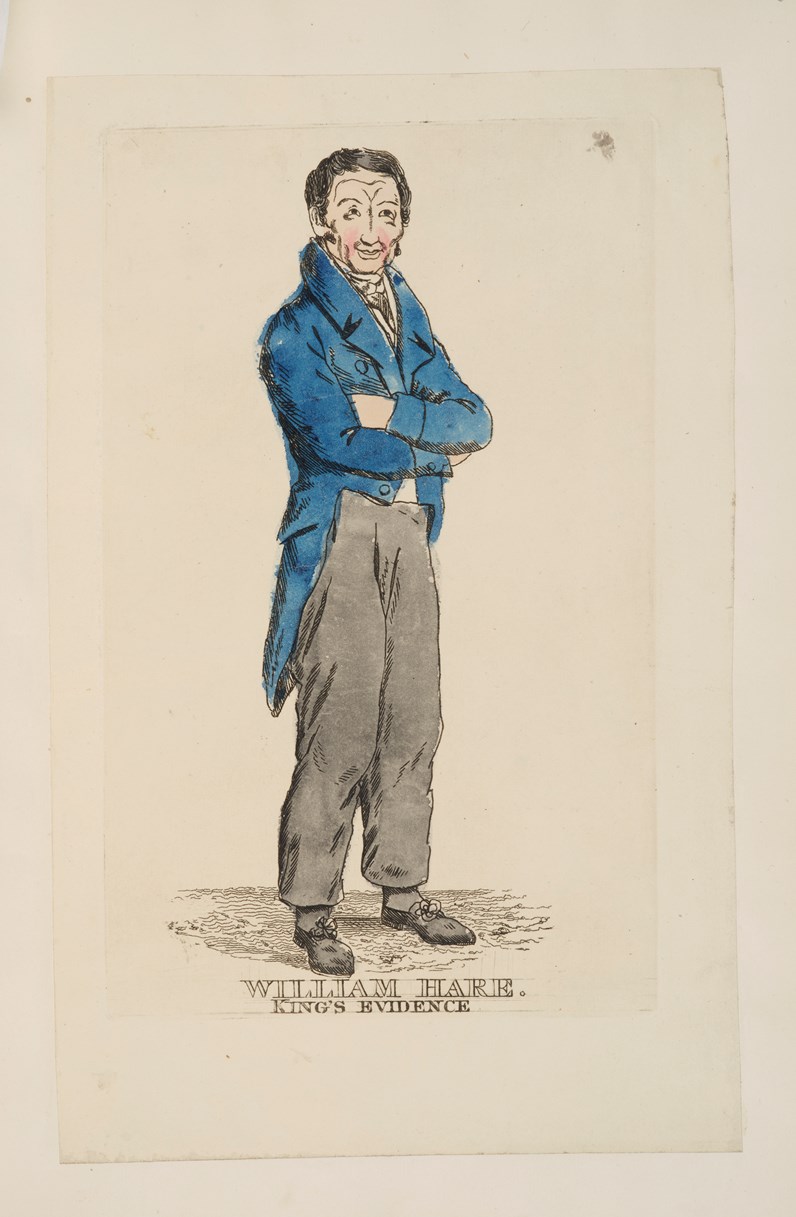
Artist's impression of William Hare. Royal College of Physicians, Edinburgh.
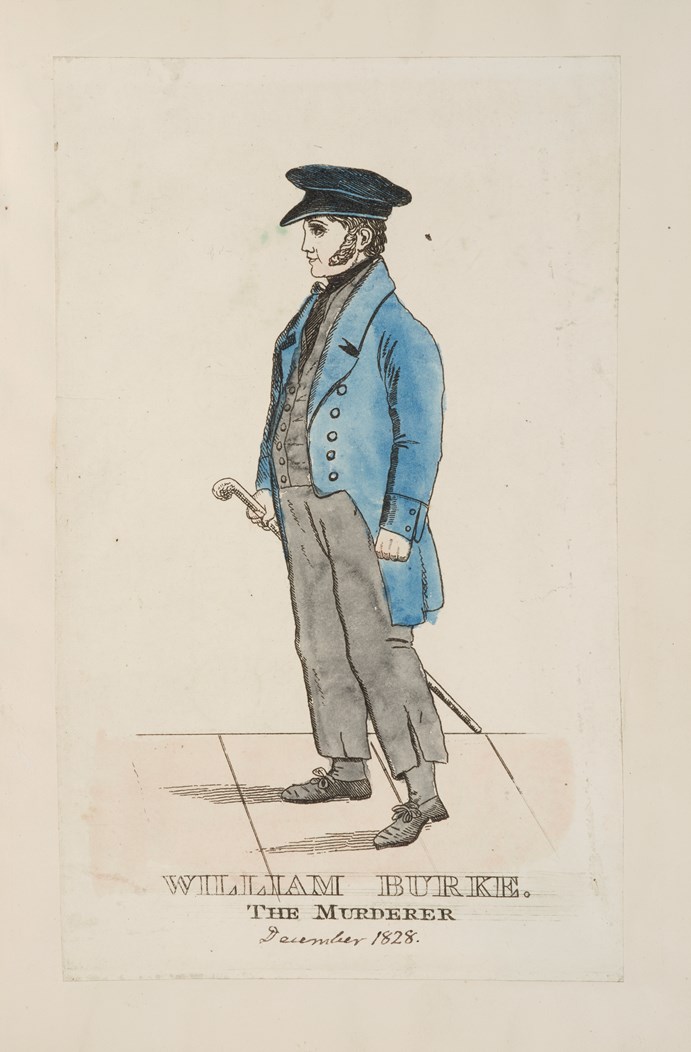
Artist's impression of William Burke. Royal College of Physicians, Edinburgh.
Edinburgh in the late 18th and early 19th century was not a pleasant place to live. It was crowded, insanitary and unhealthy. Those who could afford to lived outside the city centre or Old Town in the expanding suburbs. Others had moved out of the crowded tenements into the New Town as it was gradually built from the 1760s. But this exodus into more salubrious dwellings was counteracted by the influx of economic migrants coming into the city in search of a living.
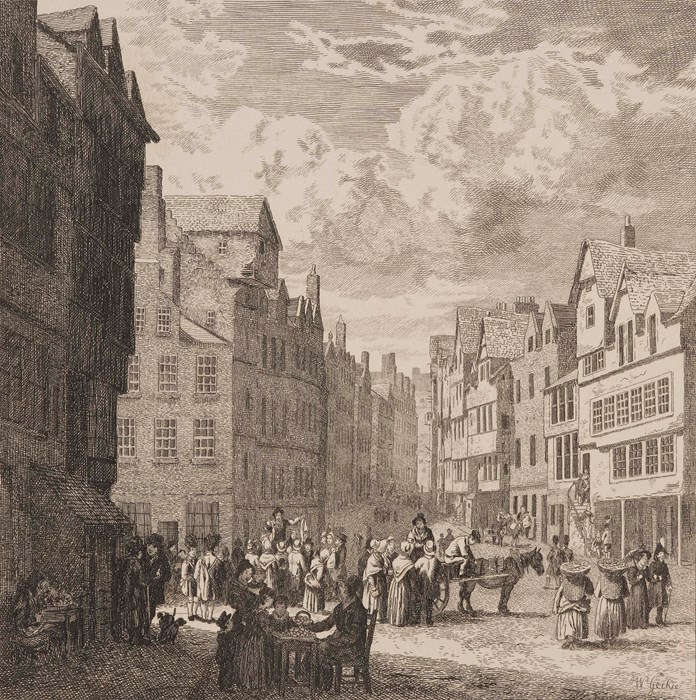
Edinburgh Old Town in the 1760s.
Among the incomers to the city was a population of people seeking employment. Late 1827, two Irish migrants, William Hare and William Burke, met whilst living at the lodging house of Hare's wife, Margaret Laird, in Tanner's Close. Tanner's Close was located in the West Port, near the busy Grassmarket. Margaret Laird and William Hare were poor but fairly secure financially in comparison to the itinerant workers or pensioners who lodged with them.
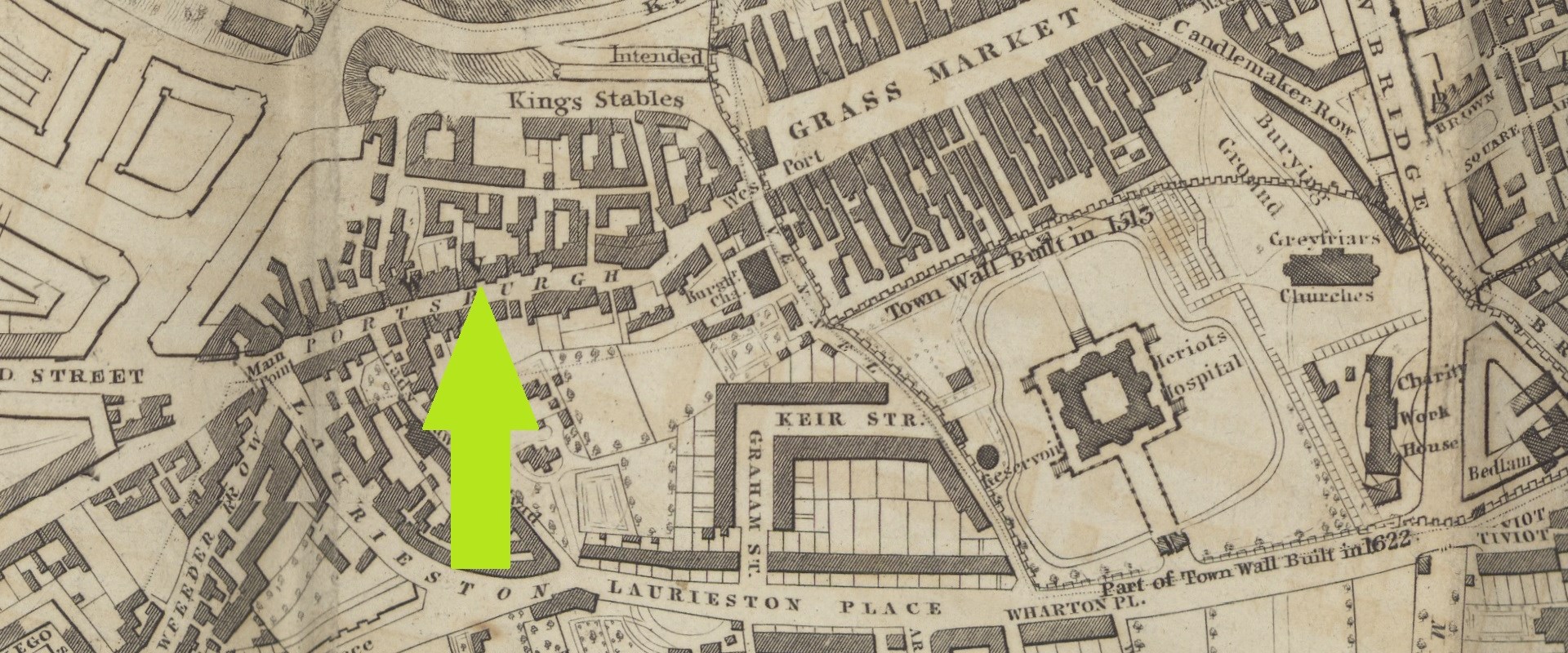
Lothian's plan of the city of Edinburgh showing the location marked 'V' of William Burke's house. Reproduced with the permission of the National Library of Scotland.
Firstly, what was her name? She is a woman who is known to us, and to history mostly by a name which was probably not her own. William Burke, William Hare, Margaret Laird or Hare and Helen McDougal were arrested in November 1828 for the murder of 'Madgy or Margery or Mary M'Gonegal or Duffie or Campbell or Docherty'. (M’ in a name is what is now usually written Mc or Mac – for familiarity, we transcribe it Mc).
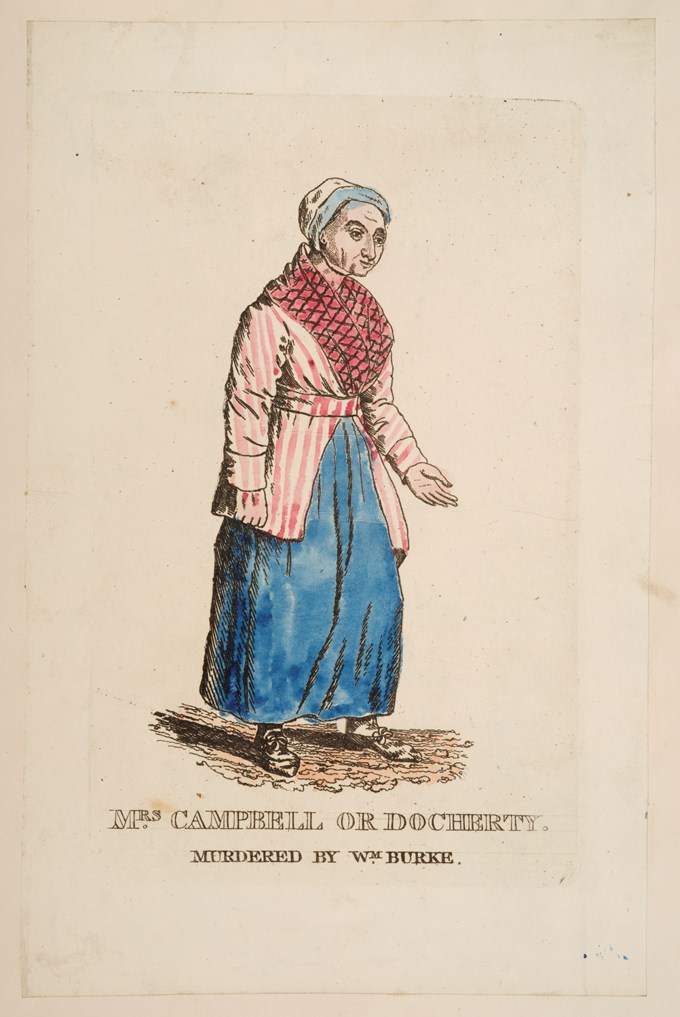
Artist's impression of Mary Docherty. Royal College of Physicians, Edinburgh.
The only witness at the trial who had met her more than a few days before her death was Charles McLauchlan, a shoemaker who shared lodgings with her son Michael Campbell, and said he had known her at home in County Donegal. He said that Duffie was her second husband’s name, her own (maiden) name was Margery McGonegal and he referred to her mostly as Mrs Campbell. He had never known her to call herself Docherty. She was several times referred to as an old woman – her son’s landlady estimated that she was in her 40s.
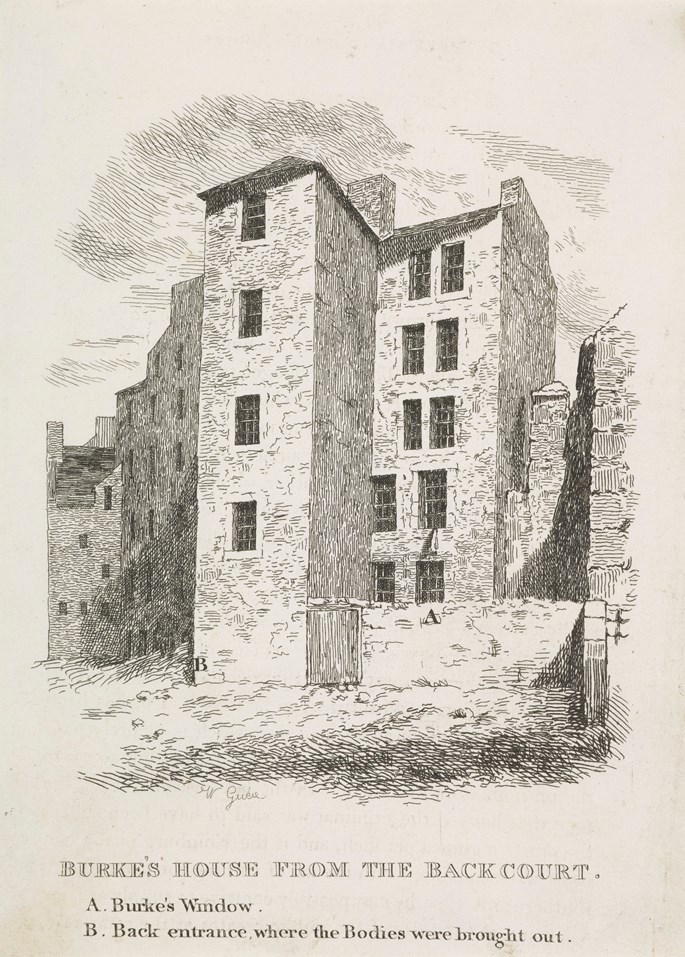
Engraving of the window (marked A. ringed) of his lodging and its back entrance (marked B), by Walter Geikie National Galleries of Scotland (CC by NC).
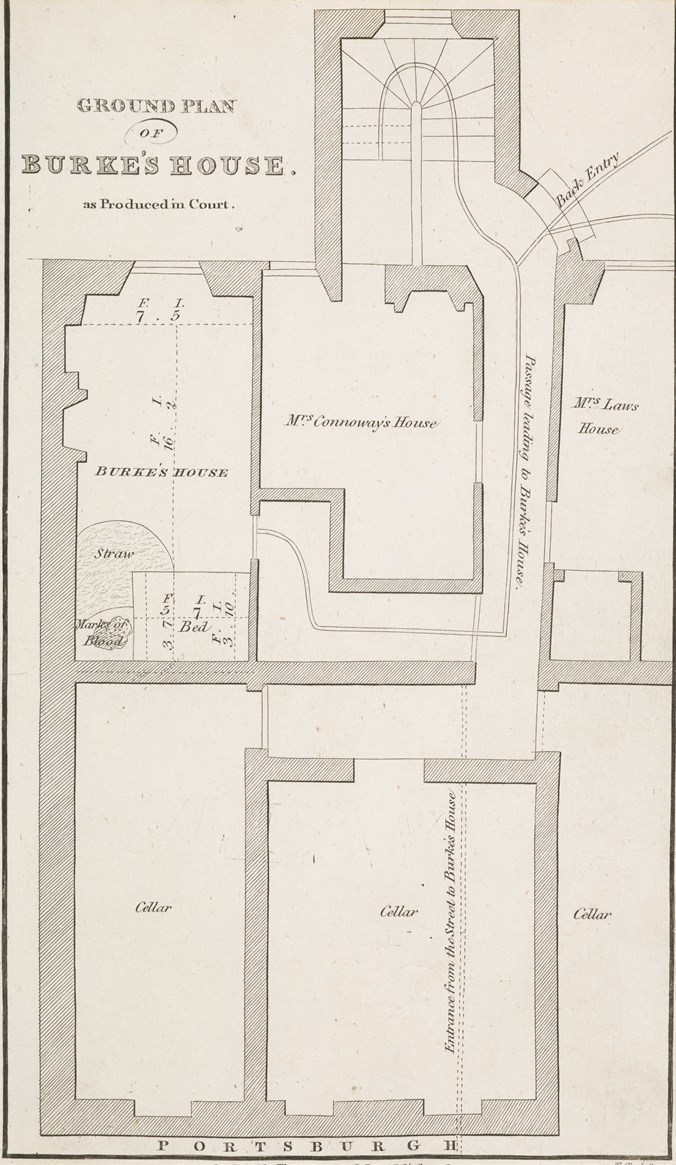
A floor plan as presented in court of William Burke's single room in which four people were murdered, by Thomas Clerk. National Galleries of Scotland (CC by NC).
So why, when she fell in with William Burke, was she known by the name of Mary Docherty? One of the neighbours who gave evidence said she gave her name as Docherty, and her husband’s as Campbell. She also insisted on calling Burke ‘Docherty’ – supporting evidence for the claim that Burke had justified his offer of hospitality by saying they might be relatives.
But had she used the name Docherty? Had she been misheard and then used the name so as to claim the hospitality Burke had offered? Were they both trying to take advantage of the other? Or had she been using a name not her own -and why might she have done that?
One other big question is where was her son? Why was evidence of her identify at the murder trial given by her son’s landlady and fellow lodger – and not by Michael Campbell? She had come to Edinburgh from Glasgow to find her son – and by my reading of the evidence she had found him – and been rejected by him. According to Charles McLauchlan, her son had been at his lodgings when she arrived, he paid for her to stay there for at least one night, and then he left.
It seems likely she had expected or pressured her son to support her now that he was established with a job in Edinburgh, and she was getting older. Her son walked out of her life on Thursday 30 October and the next day she fell in with one William Burke as she begged in a shop in the West Port area near his room.
The landlady with whom Michael Campbell and Charles McLauchlan lodged also gave evidence at the trial, but was herself in hospital when Michael Campbell and his mother were both at her house, which may account for her different version of events which the Lord Advocate followed in his summing up at the trial – the difference being whether Michael Campbell had left on Monday before his mother came looking for him, or the Thursday 30 October after she had found him. The Lord Advocate said he left on Monday 30 October, a date which did not exist – clearly this was not seen as an important point in the murder trial.
On Friday 31 October Margery Campbell, or Mary Docherty was indecisively talking about trying to find her son, about leaving town, and about staying with Burke for a fortnight. That evening she was murdered, and her son did not come forward to identify her body or give evidence at the trial where William Burke was found guilty of her murder.
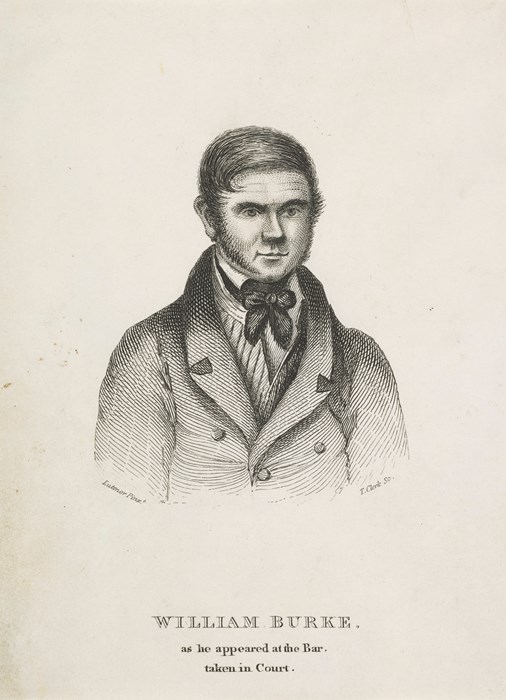
William Burke by Thomas Clerk & George Andrew Lutenor. National Galleries of Scotland (CC by NC).
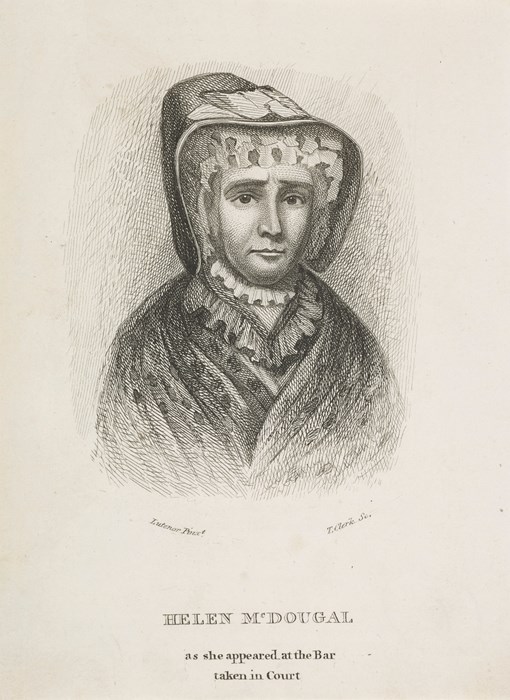
Helen McDougal by Thomas Clerk & George Andrew Lutenor. National Galleries of Scotland (CC by NC).
The trial of William Burke and Helen McDougal took place on Christmas Eve in 1828 and lasted for 24 hours through to Christmas Day. The trial attracted enormous legal interest, with eight lawyers volunteering to act for the defence in order to be part of such a high profile case. Burke was charged with three murders, but McDougal only with that of Mary Docherty, raising the question if whether two people could be tried in the same trial on such different charges? The four judges decided not, and only the charge of the murder of Mary Docherty was heard, to which both Burke and McDougal pleaded not guilty.
William Burke was convicted of the murder of Mary Docherty and the verdict arrived at half past eight on Christmas morning . Helen McDougal was given the benefit of the doubt. With the particularly Scottish verdict of 'not proven', the jury did not find her innocent but rather the crown has failed to prove her guilt. Burke alone was sentenced to be executed. After he was found guilty, William Burke confessed to the murder of Mary Docherty and to 15 more.